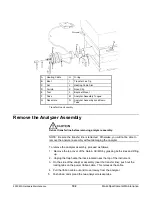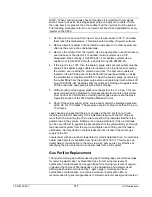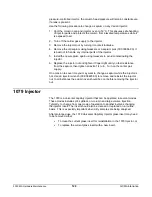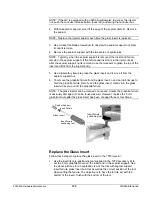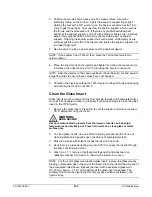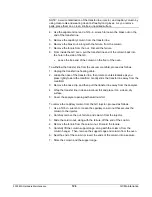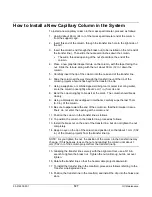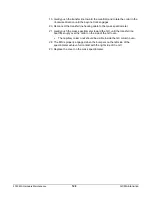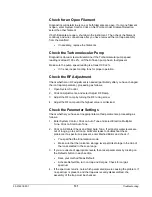
2000 MS Hardware Maintenance
116
GC Maintenance
General GC Maintenance
The common general GC maintenance tasks are checking and changing gas
supply cylinders, leak checking, and changing gas purifier filters. These should
be performed at the frequency suggested above. The following procedures are
critical to the successful long-term operation of a Gas Chromatograph. It is very
important to leak check the system on a routine basis and to ensure the quality of
gas supplies, particularly the carrier gas.
Check and Renew Gas Supplies
The pressure of the various GC gas supplies should be checked on a weekly
basis and the following guidelines used for frequency of renewing supplies:
Carrier gas:
The carrier gas supply cylinder should be changed when its
pressure drops below 200 psi. This ensures that high purity carrier gas is always
supplied to the instrument. With typical usage on one Gas Chromatograph an A-
size cylinder of carrier gas should last for three to six months. Note that this
usage includes also using the carrier gas as the supply of make-up to the
detectors. When a new cylinder is installed the regulator and tubing should be
purged with carrier gas before connecting to the GC. This will avoid introducing
a large amount of air into the GC.
Leak Check
Leak checking is one of the most important maintenance tasks that is carried out
on a Gas Chromatograph. The following information refers to general leak
checking procedures for the 3800 Gas Chromatograph. Specific information
regarding individual 3800 components will be presented in the relevant part of
this maintenance section.
Leaks in the GC system can lead to poor chromatographic performance or
damage components such as the analytical column. The presence of oxygen in
the GC carrier gas at elevated temperatures can lead to permanent column
phase degradation. While the use of an oxygen filter on the carrier supply to the
instrument can help, leaks downstream of the filter are generally more likely to be
the problem.
The use of soap-based leak detection fluids is not recommended for a high
performance capillary Gas Chromatograph due to the danger of introducing
contaminants into the system. If leak detection fluids are being used they should
only be used outside the Gas Chromatograph, i.e., to verify there are no leaks in
the plumbing to the Gas Chromatograph. If a leak detection fluid is being used
inside the Gas Chromatograph, an alcohol such as isopropanol or a 50:50
mixture of isopropanol and water should be used. Use a dropper or syringe to
place a few drops of leak detection fluid on the desired fitting and monitor the
area for bubble formation.
The most important step in leak checking is to verify that the GC system can hold
pressure. This is done by removing the column from the injector, sealing all exits
from the injector and pressurizing the system. Use the following procedure to
leak check 3800 injectors:

